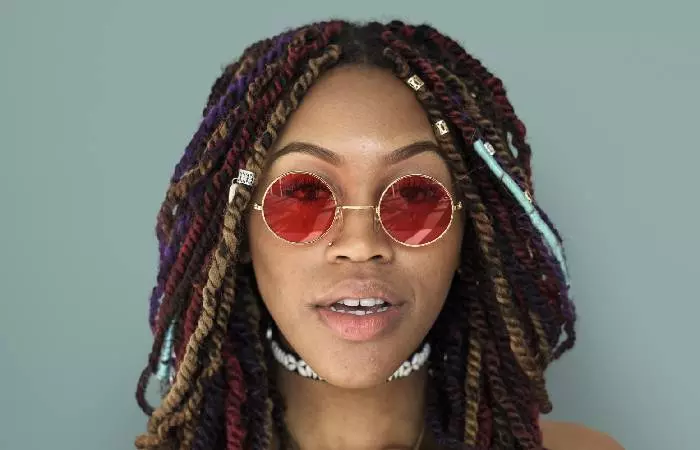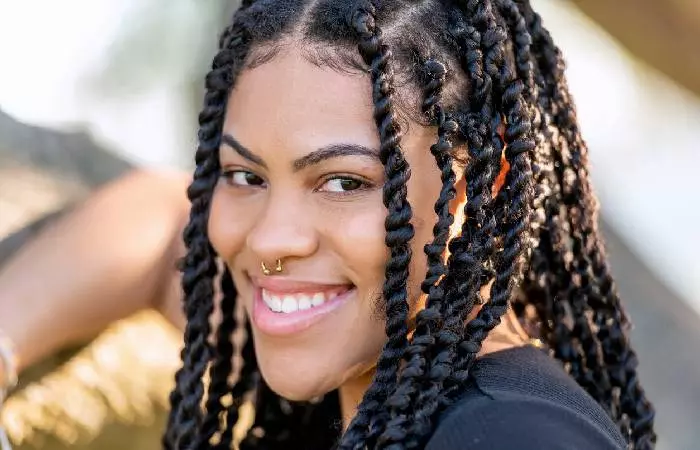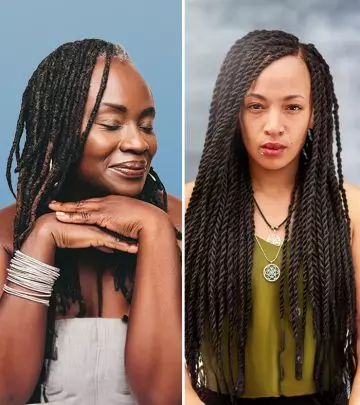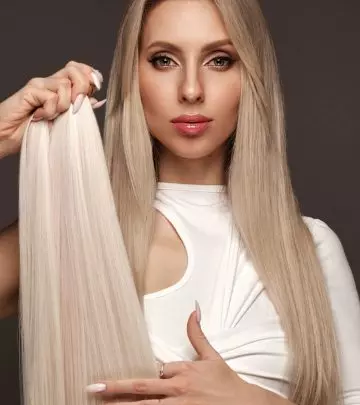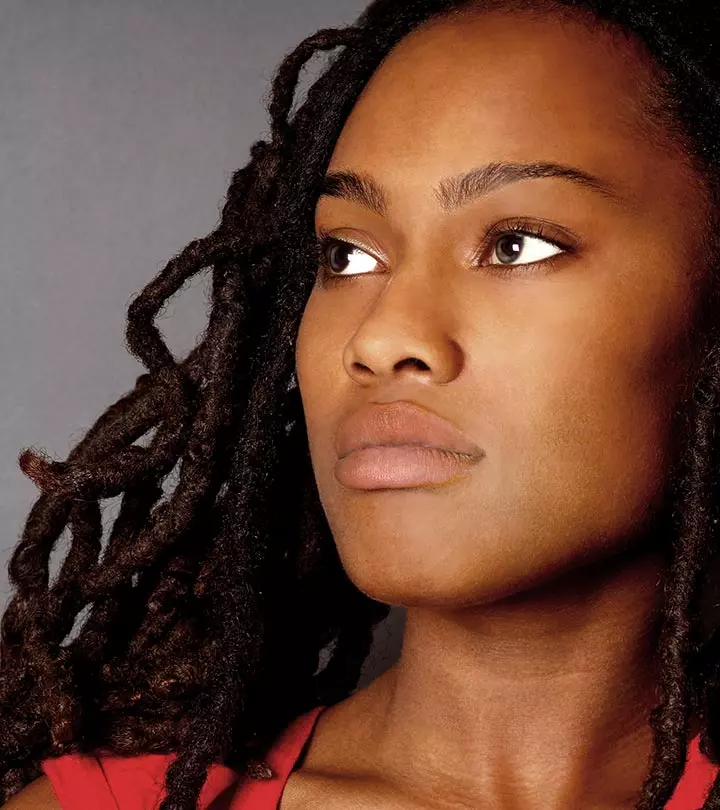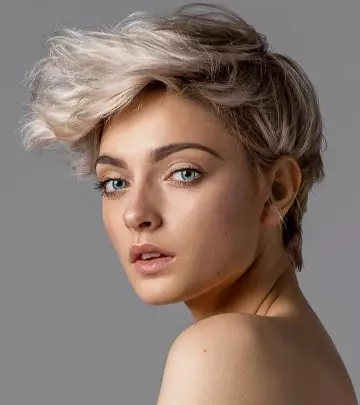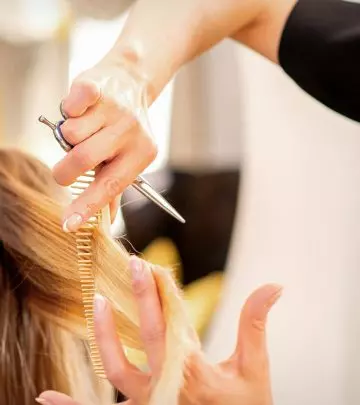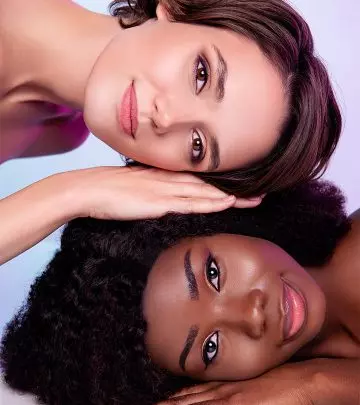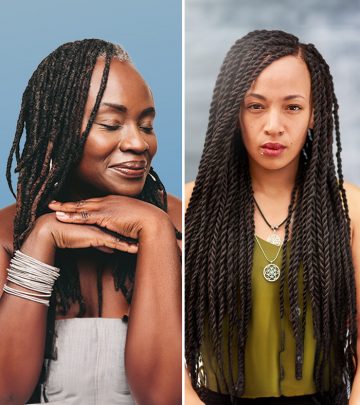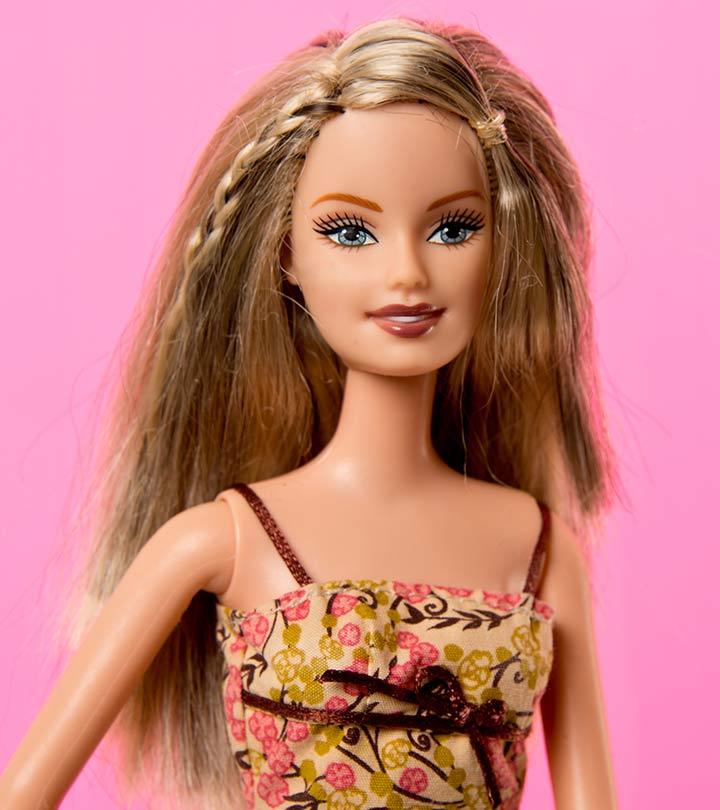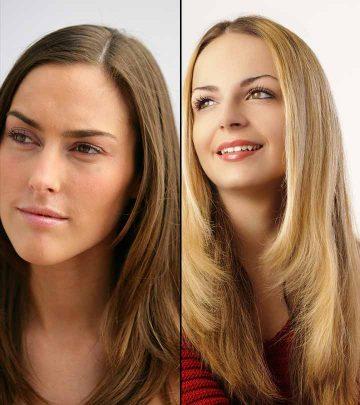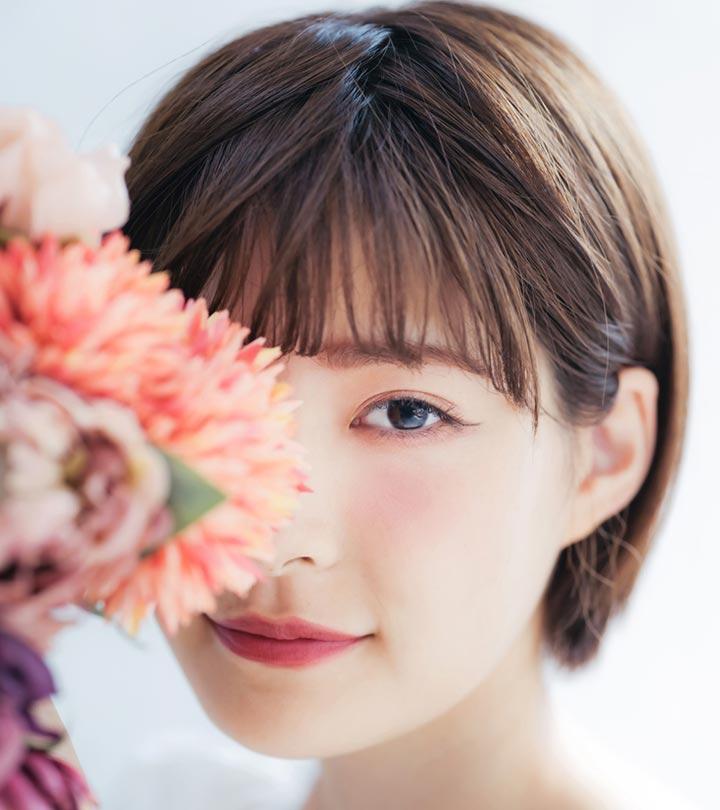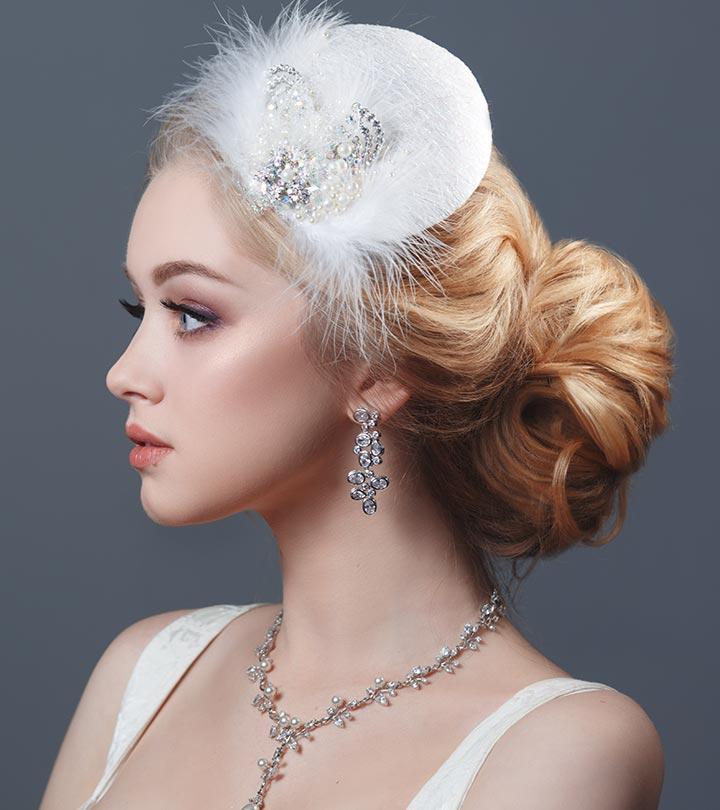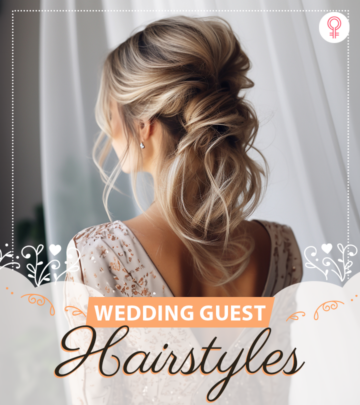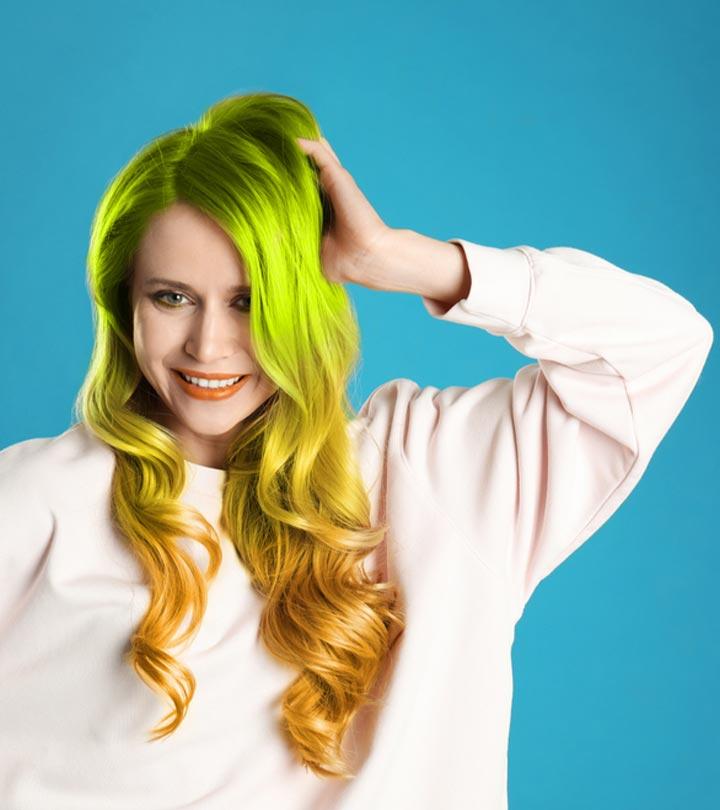Soft Locs Vs. Faux Locs: Know The Differences And Caring Tips
Locs styles can make you look and feel beautiful, powerful, and confident all at the same time.
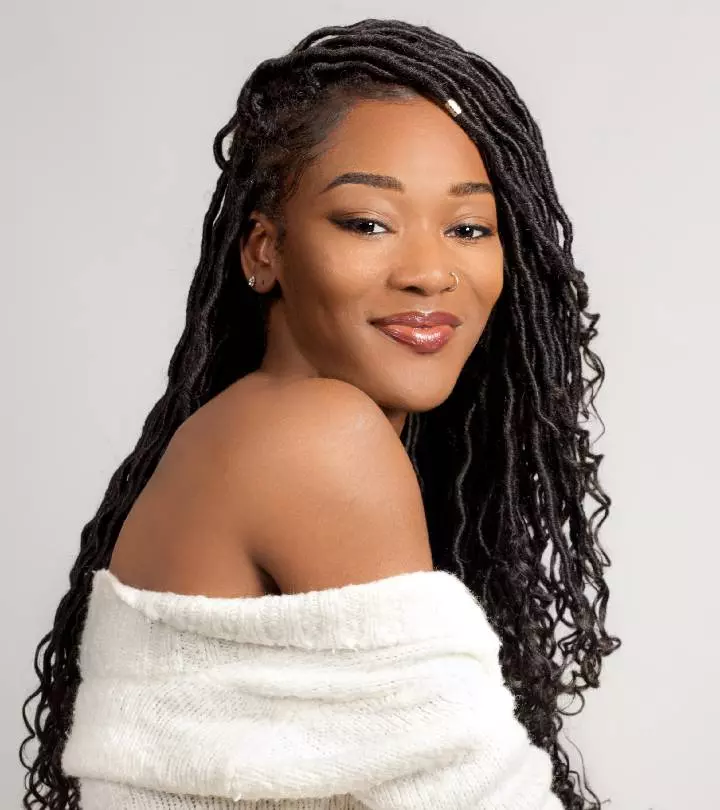
Image: Shutterstock
When it comes to protective hairstyles the options are aplenty! The newest protective trend to hit the hair world are faux locs and soft locs. If you have always found yourself caught between soft locs vs. faux locs, wondering which one is better, then you are not alone! In terms of looks, soft locs have a natural, pliable, and free-flowing texture, while faux locs have an unkempt look and are tightly intertwined. But there are so many differences between these two stunning hairdos.
Both these hairstyles offer a range of styling possibilities and are super customizable, easy to maintain, and poffer tons of colors and lengths to choose from. Most importantly, they are also a great way to give your hair a much-needed break from pulling, tugging, and heat styling. Keep reading to learn everything you need to know about soft and faux locs styles.
In This Article
What Are Soft Locs?
Soft locs, also known as butterfly locs, have been crowned the OG of all protective hairstyles. As the names suggest, they have a softer texture than regular faux styles and are more flexible than traditional dreadlocks. This hairstyle can be achieved by twisting loose crochet hair extensions around your natural hair to give it a slightly messy ‘old telephone cable’ look. This temporary hairstyle has an unmissable feminine feel; it is sweet with a hint of spice, in tune with the soft-girl aesthetics.
Primarily, these locs are perfect for those who want to keep their hair healthy without a major commitment to dreadlocks. This adorable style is also a great option if you want to give your mane a break from heat styling and protect it from environmental damage. Moreover, these afro hair extensions typically have a nice sheen, look like natural hair, and help add length to your natural hair.
The soft locs styles are fluid and don’t have a rough appearance like other braided hairstyles. Apart from soft loc hairstyles, there are different types of protective hairstyles such as faux locs that are fun to sport. Learn more about them in the next session.
What Are Faux Locs?
Faux locs is a blanket term used for loc hairstyles that feature synthetic hair extensions into your loose twists or dreads, giving them a subtle spring look, such as goddess locs and bohemian locs. They are easy to install and can be left on for weeks and months in a row. These customizable faux hairstyles are one of the easiest ways to achieve the quickest protective hairstyles and help to guard your natural hair too.
Faux locs have become more popular than braiding styles since they are easy on the roots and edges. They look effortless without being too tight on your scalp. They also give your hair a thicker, fuller look since extensions are used.
On a similar note, a blogger shared her experience of wearing faux locs. She writes, “I’ve had the Faux Locs twice now and I must say I love them for being an incredibly versatile protective style. They allow you to experience what it’s like to have dreads without the commitment and having had to devote years to growing your hair (i).”
The beauty of faux locs is that they come with endless styling possibilities since they are not limited to one hairstyle. Faux styles can be twisted, wrapped, or braided and includes the use of yarn and synthetic hair extensions installed in various ways. These hairstyles are trendy, easy to try, and great for those who have textured or relaxed hair.
Now that you have learnt what exactly both these loc styles are about, let’s get into the real reason you are here: learning the difference between soft vs. faux locs. Scroll down to read more.
Key Comparisons Between Soft Locs Vs. Faux Locs
As mentioned earlier, faux locs is a blanket term for protective hairstyles that use synthetic hair extensions. Soft locs are basically a type of faux loc style There are a few other key distinctions that can help you tell a soft loc style apart from other faux styles.
- Hair Used
Soft locs are generally constructed using water wave, afro kinky, or crochet extensions. Most other faux locs are made using synthetic Kanekolan hair, synthetic braiding hair, and Marley or Cuban twist hair. Marley hair is most commonly used, as they have a coarse feel that perfectly mimics the authentic texture of natural dreadlocks but are slightly expensive.
- Weight
Soft locks are pre-made crochet hair extensions that are light in texture and thus move more freely and easily. Being lightweight they also put less scalp tension and extend the wear of your look. Other faux locs are considered to be more stiffer and bulkier.
- Installation Method
Soft locs can be done fairly quickly, taking around 2-5 hours to install. The process involves braiding a starter cornrow braid that acts as an anchor of the locs. After you weave 2-4 stitches of the cornrow, then twist in individual loose bits of extensions into the loc.
Depending on which type of faux loc you try, it may take around 2-5 hours to install. Other faux locs can be installed using either the braid-in or crochet methods.
- Braid-in Faux Loc Method: This style involves box braiding hair, then wrapping hair extensions around each braid.
- Crochet Method: This style involves using a crochet hook to loop the extensions through the braids or starter cornrows. Also, this method is considered to be quicker and less intricate than the braid-in method.
- Longevity
Again, most faux locs can last for months. Soft locs, specifically, can last for about 4-6 weeks. Most faux styles get better looking with time as they adapt to the wearer’s natural hair texture.
It is important to know that leaving any faux style, including soft locs, on for any longer than the recommended duration can cause damage. Since the locs apply some tension they may pull at the hair roots and lead to excessive tension on the scalp, weakened roots, and hair breakage.
- Maintenance And Hair Care
Other faux locs are comparatively easier to maintain than soft locs, as they have a fabulous lived-in texture and do not need to be washed or conditioned too often. However, when it comes to soft locs, it’s important to maintain their soft texture and prevent the strands from fraying.
The best way to care for faux locs, including the soft style, is to wash them the right way. Since faux locs contain so many different styles, you have to pick specific hair products based on the one you flaunt. Since soft locs are lighter and a little loose, you should use mild products made for natural hair. If you start noticing build-up after a few weeks of wearing these protective hairstyles then use a gentle cleanser or diluted apple cider vinegar to cleanse the root and the scalp. Opt for lightweight formulas while washing faux locs and intensely hydrating products for soft locs.
Here are a few general hair care tips to keep faux locs looking fresh and healthy:
- Avoid touching the locs too often to make them last longer and prevent follicles from being damaged and unraveling locs.
- Wrap your hair in a silk scarf or satin bonnet before sleeping or use silk pillowcases to minimize friction, prevent breakage, retain moisture, and reduce undue tension.
- Use a shower cap while showering to prevent the locs from getting wet. The wet tresses can faux loc hair extensions to slip down your natural hair easily and leave you with a frizzy mane after drying.
- When washing your hair let the sulfate-free shampoo run down the locs without manipulating it. Gently apply the shampoo through the length of the locs without rubbing it harshly. Follow it up with a conditioner while focusing on the mid-lengths and the ends of the mane.
- Use a leave-in serum to keep the baby hairs in place and moisturized.
It is also important to understand that there is no one-size-fits-all approach when it comes to hair care since faux locs contain so many different styles, including soft locs. So if you are still confused on how to go about it consult a loctician to discuss the hair concerns and understand what products work for you.
- Cost
The cost of faux locs can range anywhere between $150-$500.depending on the style you want to try. Soft locs, specifically, cost around $200-$400. This price may change based on the type of hair used, location, extension length and color, hair stylist’s skill level, and other additional costs based on customization. If you want your soft locs styled in a specific hairstyle, like an updo, then it may cost you even more.
Since soft locs are a type of faux loc hairstyle, they have more similarities than differences. Learn about them in the following section.
Similarities Of Faux Locs And Soft Locs
- Protective Styling
Faux loc styles, including soft locs, are temporary and great for protecting natural hair by limiting damage from styling tools, environment factors, and manipulation. Also, they do not require long-term commitment like that of real dreadlocks.
- Low Maintenance
These loc styles require little maintenance as they do not require to be styled daily and can be maintained by occasional washing and moisturizing the mane.
- Appearance
Most faux locs resemble dreads or twists with a soft messy touch. Soft locs, specifically, look more like loosely dreaded twists.
- Versatility In Styling
These locs styles can be styled in varied ways including buns, updos, ponytails, or simply a relaxed look. Also, they come in varied lengths and thicknesses to suit varied preferences and styling goals.
The main reason why most people have been confused between soft and faux locs is because they are styled in a similar fashion. Keep reading below to learn about the top styling trends you can try for any type of faux loc, including the soft one.
Styling Faux Locs And Soft Locs
- Play Around With Color
The beauty of faux locs is that they have that loose messily coiled look. You can enhance this vibe by simply using colorful hair extensions. For soft locs specifically, you can opt for dark colors, like deep reds or browns, that add a hint of color to your hair or a soft pastel shade that adds to the whimsical look.
- Accessorize
Use hair jewelry and other accessories like beads, seashells, and yarns to switch up your mane game in a major way.
- Say Yes To Scrunchies
Jazz up your locs by adding mini scrunchies in the same colors or mix-match in different colors to deck up your locs. You can also sport hairstyles from half-pony to top knots, and play with fabrics and sizes to create cute scrunchie hairstyles.
- Try New Things
The length and versatility of locks offer endless styling options. Faux styles can be worn in manifold ways and be casual, dressy, or elegant depending on the desired aesthetic.
- Hairstyles
A sure way to mix up your loc look is to style it differently everyday. You can style any faux loc into one big braid, different types of ponytails, updos, and half-dos, or a big twist.
So to recap, faux locs are a protective hairstyle that closely resembles dreads and twists. Soft locs are a type of faux loc style that look like bouncy coiled dreaded twists. These popular styles do not require extensive maintenance, add length and volume to the hair, and provide flexibility in styling options. Follow the given maintenance tips to keep your faux locs look fine! These temporary styles are time-saving and look incredible on those with natural hair, kinky hair, curly hair, and frizzy style mane. They are just timeless styles that you cannot go wrong with. They offer the beauty and ease of dreadlock style and can be easily confused with your real hair.
Frequently Asked Questions
1.Can soft locs and faux locs be removed easily?
Faux locs are the overreach term for a bunch of different loc styles. Depending on the style you choose, faux locs can be easy or time consuming to remove. Soft locs, specifically, can be removed easily since they are a little looser and not as tightly wound as other faux styles.
2.Are soft locs and faux locs suitable for all ages?
Flaunting locs makes for a bold statement and is a great way to wear natural hair. All faux hairstyles, including soft locs, are considered to be popular choices among individuals of all ages and hairstyles.
3. Can soft locs and faux locs be installed with different parting patterns?
Soft locs and other faux locs can be installed with different parting patterns to achieve varied styles and looks. For instance, for soft locs a zig-zag parting can help to add visual interest to the look, while a side parting can help to soften the harsh features of the face.
Key Takeaways
- Faux locs is a blanket term for temporary protective loc styles that use hair extensions to give your tresses a loose dread or twist look.
- Soft loc are a type of faux loc style and have a softer, buoyant texture while other faux locs have a coarser texture.
- The main difference between soft locs and other faux styles, like bohemian locs, is the type of hair extensions they use.
- These protective hairstyles are low in maintenance, have a similar texture, and offer versatility in styling.
Proper maintenance of loc styles can eventually give you the result you are looking for. Watch this video to learn how to keep your soft locs and faux locs looking fresh and vibrant all the time.
Personal Experience: Source
StyleCraze's articles are interwoven with authentic personal narratives that provide depth and resonance to our content. Below are the sources of the personal accounts referenced in this article.
i. My Faux Locshttps://zaviamonet.blogspot.com/2014/11/my-faux-locs_5.html
Read full bio of Anjali Sayee
Read full bio of Pahul Nanra




